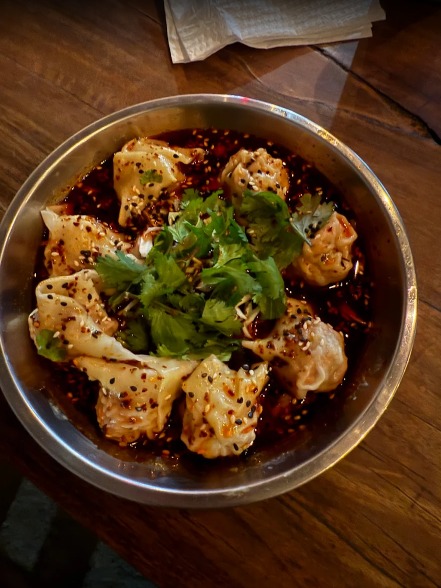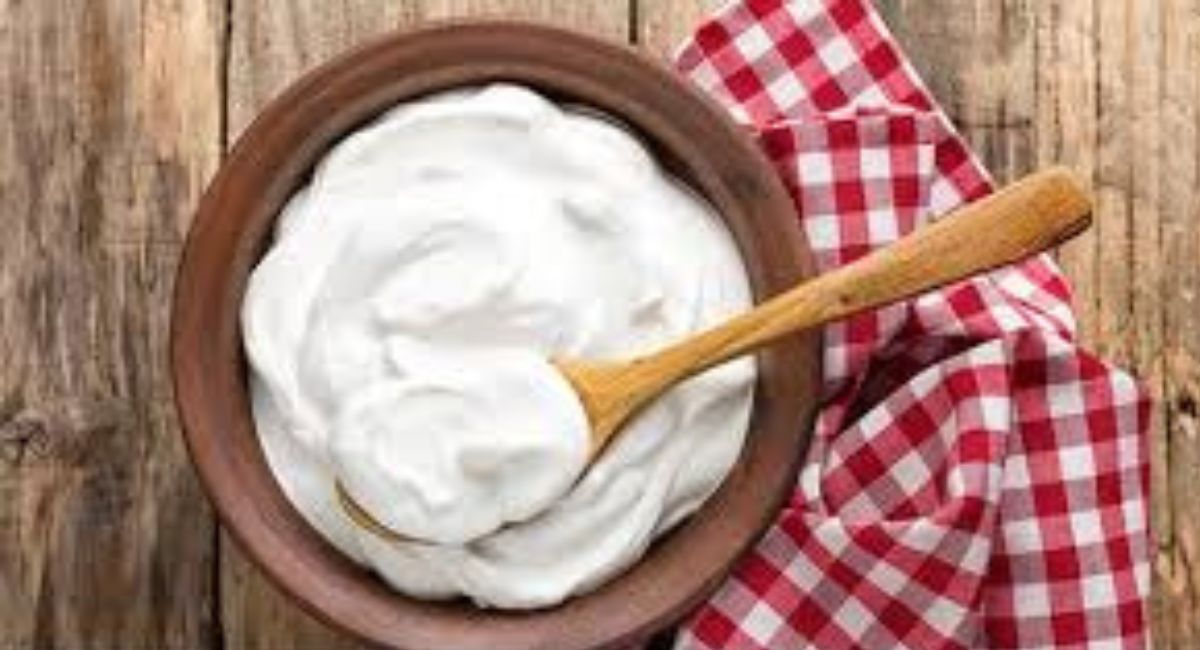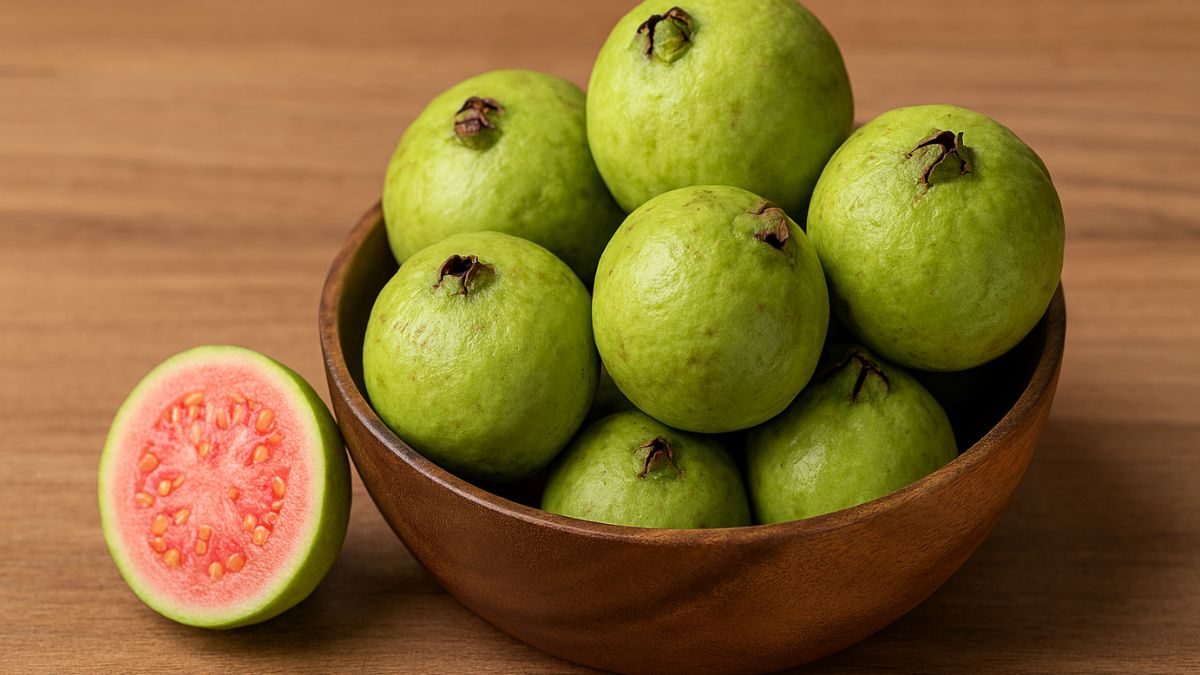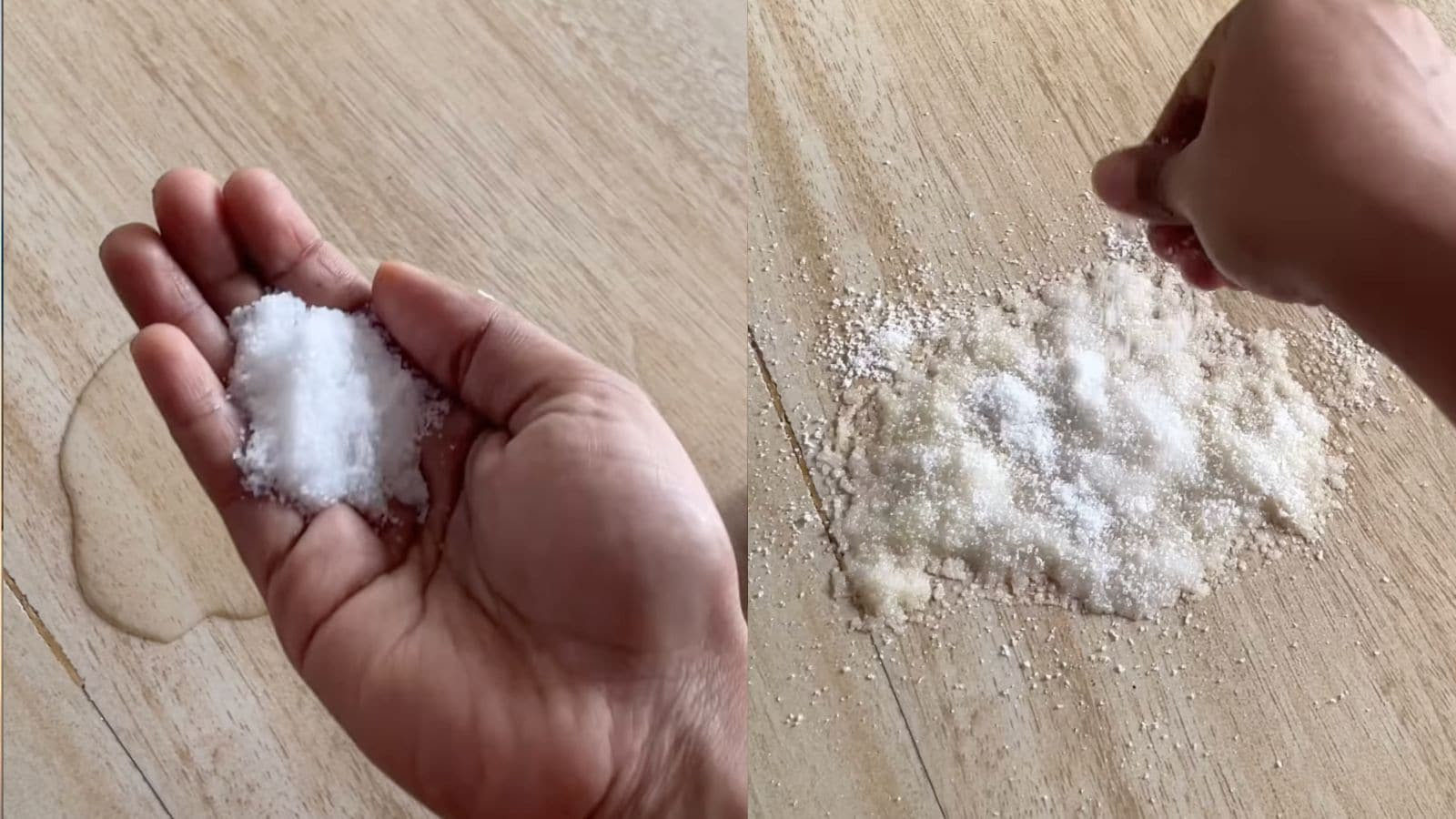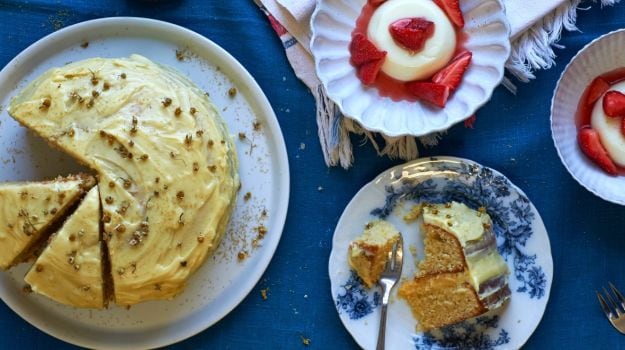Baking is so often about making hearty comfort food that it's difficult to even imagine what "summer baking" would look like. The heaviness of suet is certainly off-limits, as are hefty gateaux, steamed puddings and ladlefuls of hot custard. Heavy chocolate concoctions, and those rich with cream, caramel and syrup, sit uneasy in the summer heat, too. But lighten dessert up with a touch of something floral and the whole thing comes back into focus: sweet, mild camomile alongside a tart pineapple curd perhaps, or a quivering orange-blossom panna cotta with strawberries. You could play around with rose or even lavender buds if you're brave, and watch your baking come to full bloom.
Summer pineapple camomile cake
This mellow camomile cake sits perfectly with the sharpness of a thick layer of bright pineapple curd. The recipe below will make more curd than you need, but just store it in a clean, dry jar for up to 1 week in the fridge. It's just as good on toast, through ice-cream, on your little finger as in is in this cake, so I doubt you'll have trouble using it up.
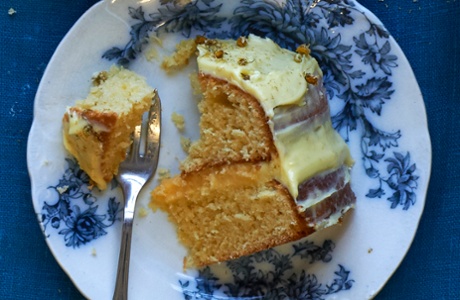
You can use camomile teabags if you can't find the loose flowers - just swap 1 teabag per tablespoon of dried camomile buds. They're less potent, though, so give them plenty of time to steep and do source loose camomile if you can. Health food stores sometimes have it, or look online at souschef.co.uk.
Serves 10-12
250g unsalted butter
100ml milk
6 tbsp dried camomile buds
300g caster sugar
Zest of 1/2 lemon
2 tsp vanilla extract
4 large eggs
350g plain flour
3 tsp baking powder
1/4 tsp salt
For the curd
2 large egg yolks
1.5 tbsp cornflour
40g caster sugar
100ml pineapple juice
Juice from 1 lemon
1 tbsp unsalted butter
For the icing
225g unsalted butter
6 tbsp dried camomile flowers
300g white chocolate
200g icing sugar
Zest of 1/2 lemon
15-25ml milk, if needed
1. Preheat the oven to 180C/350F/gas mark 4. Grease and line two 20cm round cake tins - preferably loose-bottomed or springform ones.
2. Combine the butter, milk and camomile in a pan and set over a low heat until the butter has completely melted and the mixture has just begun to simmer. Remove from the heat and leave to cool and infuse for 5 minutes or so before straining into a large mixing bowl, leaving the camomile flowers behind while squeezing as much liquid from them as possible.
3. Add the sugar, lemon zest and vanilla extract to the infused butter mixture and whisk to combine. Add the eggs one at a time, mixing well between each addition. In a separate bowl, stir together the flour, baking powder and salt before adding this dry mixture to the wet ingredients. Whisk until the batter is smooth, then divide it between the prepared tins.
4. Bake for 25-30 minutes, until well-risen and golden brown. A small knife inserted into the middle of each cake should emerge clean. Leave to cool in their tins before unmoulding.
5. While the cakes are cooking and cooling, make the curd. Whisk the egg yolks, cornflour and sugar together in a small pan, then slowly add the pineapple and lemon juices. Set the pan over a low heat and stir constantly for 5-10 minutes - as long as it takes for the curd to reach the consistency of very thick custard. It'll be resolutely liquid for the first few minutes, but don't give up on it. As soon as it's ready and just about to start bubbling, remove it from the heat, stir in the butter and leave it to cool to room temperature.
6. To prepare the icing, melt the butter with the camomile over a low heat until the butter starts to bubble. Remove from the heat and leave to cool for 10 minutes before sieving out the camomile flowers. While the butter cools a little, chop the white chocolate into small chunks and melt in a heatproof bowl set over a pan of simmering water (you can also melt it carefully in the microwave in short bursts, if you'd rather). Stir the melted white chocolate into the slightly cooled, strained butter and leave to cool to room temperature.
7. Once the butter and chocolate mixture has cooled, put the icing in the fridge for 20 minutes to firm to the consistency of softened, creamed butter. Stir it at 5 minute intervals to avoid lumpiness. Once it's thick and smooth, add the icing sugar and lemon zest and gently mix. Add a dash of milk, if necessary, to give a spreadable, buttercream texture.
8. Spread a few dollops of the curd on top of one cake layer, sandwich it with the other, then spread the icing evenly over the top and sides of the sandwich. Drizzle the top with a little more curd or scatter with dried camomile flowers.
Orange blossom panna cotta with strawberries
The simplicity of panna cotta isn't something to be messed with, but a drop or two of orange blossom water really works to bring out the delicacy of this dessert. Make sure you leave plenty of cooling and setting time in making these for a special meal.
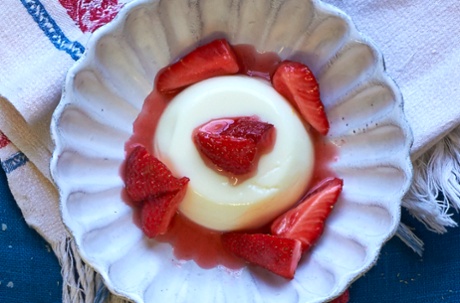
Makes 4
3 leaves gelatine, cut into large pieces
300ml whole milk
90g caster sugar
Zest of 1 orange, coarsely grated
100ml single cream
Orange-blossom water, to taste
175g strawberries
30g caster sugar
1. Soak the gelatine leaves in cold water for 5 minutes or so, until softened. Meanwhile, heat the milk, sugar and orange zest until scalding hot.
2. Drain the liquid from the gelatine pieces, then add the pieces to the hot milk mixture, whisking immediately to combine. Set back over a low heat and bring to the boil. As soon as the mixture starts to simmer, take it off the heat, stir in the single cream and add orange blossom water, to taste. Strain the liquid through a fine sieve to remove the orange zest.
3. Lightly grease 4 individual 150ml pudding moulds or ramekins and divide the panna cotta mixture between them. Leave to cool to room temperature before placing in the fridge for a few hours to chill and set. I find it's best to leave them overnight, but as long as you can spare2-3 hours of fridge time, you should be fine.
4. Hull and quarter the strawberries, then toss them in a bowl with the caster sugar and a few more drops of orange-blossom water, to taste. Place in the fridge to macerate while the puddings set.
5. To unmould the panna cotta, carefully dip the bottoms of each basin or ramekin in hot water for a few seconds before quickly inverting the pudding on to a plate. If the panna cotta sticks stubbornly in its mould, try running a small knife around the edge toor dipping into the hot water for a few moments more. Serve with the macerated strawberries.



